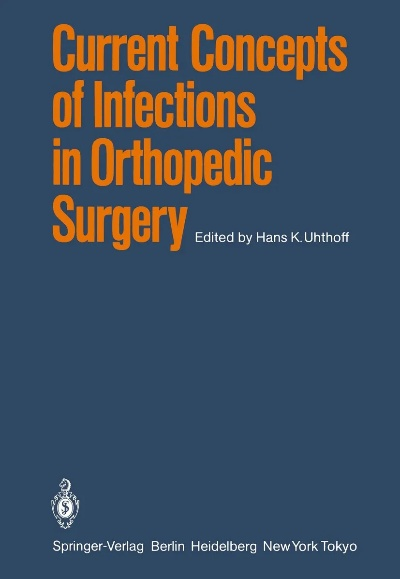The Origins of Formaldehyde in Textiles:A Comprehensive Guide
This comprehensive guide delves into the origins of formaldehyde in textiles, providing an in-depth understanding of its production processes and environmental implications. The guide begins by discussing the chemical composition of formaldehyde, highlighting its importance in the textile industry as a preservative and antibacterial agent. It then goes on to explore the various sources of formaldehyde in textiles, including the use of urea-formaldehyde resin, phenol-formaldehyde resin, and other chemicals that are added during the manufacturing process. Additionally, the guide examines the environmental impact of formaldehyde, including its toxicity and potential health hazards for workers and consumers. Finally, it provides practical tips on how to reduce the exposure to formaldehyde in textiles, such as using hypoallergenic materials and following proper ventilation practices. Overall, this guide is a valuable resource for anyone interested in understanding the origins and implications of formaldehyde in textiles.
Introduction: Textiles, the fabrics we wear and touch every day, are made from a wide range of materials. One of the most concerning issues associated with textiles is the presence of formaldehyde, a colorless, pungent-smelling gas that has been linked to health problems such as respiratory diseases, cancer, and developmental disorders. This essay aims to provide an overview of the sources of formaldehyde in textiles and offer practical tips on how to reduce exposure to this harmful chemical.
Sources of Formaldehyde in Textiles: Formaldehyde is commonly used as a preservative and a stabilizer in textile manufacturing processes. Here are some common sources of formaldehyde in textiles:
-
Chemical Dyes: Many synthetic dyes used in textiles contain formaldehyde. The process of dyeing involves treating fabric with a solution containing the dye and formaldehyde, which reacts with the fibers to create a permanent color.

-
Pre-treatment Agents: Before washing or laundering, certain textiles undergo a pre-treatment process to enhance their colorfastness and durability. During this process, formaldehyde may be used as a preservative or antibacterial agent.
-
Finishing Agents: After the initial dyeing process, textiles may be subjected to additional finishing treatments, such as coatings or embellishments. These treatments often involve the use of formaldehyde-containing agents to achieve desired aesthetic effects.
-
Binding Agents: In the production of woven and knitted fabrics, formaldehyde is used as a binding agent to hold the fibers together during the weaving or knitting process.
-
Laundry Chemicals: Some laundry detergents contain formaldehyde, which helps to kill bacteria and prevent stains from setting. However, excessive use of these products can release formaldehyde into the environment.
Table: Common Sources of Formaldehyde in Textiles | Source | Description | |------|------------| | Chemical Dyes | Used in the dyeing process to create permanent color | | Pre-treatment Agents | Included in treatments before washing or laundering | | Finishing Agents | Used in finishing processes to enhance colorfastness and durability | | Binding Agents | Used in weaving and knitting to hold fibers together | | Laundry Chemicals | Contained in laundry detergents to kill bacteria and prevent stains |
Case Study: Formaldehyde Exposure and Health Effects In 2017, a case study involving a group of women exposed to formaldehyde while working at a textile factory was reported. The women worked as garment cleaners, where they were required to handle fabrics that had been treated with formaldehyde-containing chemicals. The exposure led to symptoms such as headaches, nausea, and fatigue, and some employees developed serious health issues including asthma attacks and neurological disorders.
The case highlights the importance of understanding the sources of formaldehyde in textiles and taking appropriate measures to reduce exposure. It also underscores the need for proper ventilation and protective clothing when handling textiles that have been treated with formaldehyde-containing chemicals.
Practical Tips to Reduce Formaldehyde Exposure: To minimize your exposure to formaldehyde, consider the following tips:
-
Choose Natural Fibers: Natural fibers like cotton, linen, and wool are generally less likely to contain formaldehyde than synthetic fibers like polyester and nylon. When shopping for textiles, look for labels that indicate whether the fabric is made from natural or synthetic fibers.
-
Avoid Excessive Laundry: Overusing bleach and other laundry chemicals can release formaldehyde into the environment. Try using eco-friendly options like natural detergents and air-drying clothes instead of using dryers.
-
Regularly Clean Up: If you work in a textile industry, regularly clean up any spills or stains on your clothes and equipment. This will help prevent the buildup of formaldehyde-containing chemicals.
-
Use Proper Ventilation: Ensure that your workplace has adequate ventilation to reduce the concentration of formaldehyde in the air. Open windows and use fans to promote air circulation.
-
Stay Healthy: Regular exercise and a balanced diet can help boost your immune system and reduce your susceptibility to formaldehyde-related health problems.
Conclusion: Formaldehyde is a persistent pollutant found in many textile products, but it is not inherently harmful. The key lies in understanding its sources and adopting practices that minimize exposure. By choosing natural fibers, avoiding excessive laundry, regularly cleaning up, using proper ventilation, and staying healthy, you can protect yourself from potential health risks associated with formaldehyde exposure in textiles. Remember, small changes can make a big difference in reducing your overall exposure to this harmful chemical.

亲爱的朋友们,今天我们来聊聊纺织品中的甲醛问题,甲醛,作为纺织行业的重要化学物质,其来源和影响不容忽视,让我们一起来探讨一下。
甲醛的来源
甲醛主要来源于纺织品的加工过程中,在纺织品的生产过程中,为了增加纤维的强度和弹性,常常需要使用一些化学物质来处理纤维,这些化学物质中就包括甲醛。
案例分析
以一个具体的案例来说明甲醛的来源,假设某品牌的新面料在生产过程中使用了含有较高甲醛含量的化学物质,这种化学物质可能来自于染料、助剂或其他添加剂,当这些化学物质被添加到纺织材料中时,它们会与纤维中的天然成分发生化学反应,生成甲醛。
英文表格说明
以下是英文表格,用于更清晰地说明纺织品甲醛的来源:
| 成分/物质 | 描述 | 来源或产生方式 |
|---|---|---|
| 染料 | 用于染色和增色的化学物质 | 在纺织品的生产过程中使用 |
| 助剂 | 用于增强纤维性能的添加剂 | 在纺织品的生产过程中添加,用于改善纤维的性能和外观 |
| 其他添加剂 | 其他可能用于提高纺织品性能的物质 | 在纺织品的生产过程中添加,可能涉及环保标准较高的物质 |
| 化学反应 | 甲醛与其他化学物质发生反应生成 | 在纺织品的加工过程中,化学物质与纤维中的天然成分发生反应 |
甲醛的影响
甲醛作为纺织行业的重要化学物质,其影响不容忽视,甲醛超标可能会对人体健康造成危害,长期接触高浓度的甲醛可能导致呼吸道疾病、皮肤过敏等问题,甲醛超标还可能对环境造成污染,未经妥善处理或处理的不到位,甲醛可能会对土壤、水源等造成污染,影响生态平衡,甲醛超标还可能影响纺织品的质量和安全性,不合格的纺织品可能含有有害物质,不符合国家安全标准。
纺织品中的甲醛问题是一个不容忽视的问题,我们应该从源头控制甲醛的产生,加强纺织品的环保标准管理,提高纺织品的检测和认证水平,我们也应该加强公众对甲醛问题的认识和关注,提高公众的环保意识,我们才能确保纺织品的质量和安全性,保护人们的健康和生态环境。
就是关于纺织品甲醛的有关内容,希望对大家有所帮助,如果您有任何疑问或需要进一步的解释,欢迎随时提问。
Articles related to the knowledge points of this article:
Success Stories of Textile Fabrications
The Transformative Power of Advanced Textile Materials
Where to Explore Textile Certifications
Shanghai Jingqing Textiles:The Fabric of Innovation in a Modern City
The Ultimate Guide to Choosing the Best Materials for Your Fashion Needs



